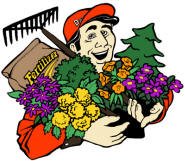With Thanksgiving now past for another year the Christmas season is now upon us continuing about a month. At the end of the year, the nursery will close until March 1st as it has for the past 40 years although activities besides sales will continue throughout the winter as well as the upcoming seminars starting January 30th.
Strangely, the poinsettias continue to expand in size of the plants and the colored flower bracts so much so that they seem to be on steroids compared to last year. No doubt sunny, warm weather has been the major contributor. Our fresh cut trees from southern Ohio are ready to view with as always the larger trees sold first as the shorter ones of 9 feet and under normally sell in the next two to three weeks. While Ohio grown Fraser Fir are not common, they do exist on some well-drained sites such as those in southeast Ohio.
While the main nursery store is closed, the Owl Barn has been converted into a holiday barn because of its ambiance resembling a Currier and Ives Christmas print. Grave blankets construction has been well under way for pick up or delivery. How much effort goes into customizing many of the decorations to suit individual tastes! No new offerings have been added this year although design trials will start next week that will be implemented fully next year.
This weekend at least 5 gallons of deer repellent will be sprayed in the botanical garden to prevent deer from browsing on the many rhododendron and what seems to be their favorite azalea called ‘Herbert’. Herbert with its dark purple double flowers is one of the most winter hardy and easiest to grow azalea but seems to be a favorite of deer that only want to chew off the fat flower buds!
As winter melts into spring, the barn will be surrounded with thousands of spring flowering bulbs and hundreds of multi-colored creeping phlox spilling over the boulder wall to its north. Only after the cold and sometimes seemingly endless winter will we see the next spring. The trick is to enjoy the winter and it will pass quickly.
Tom



